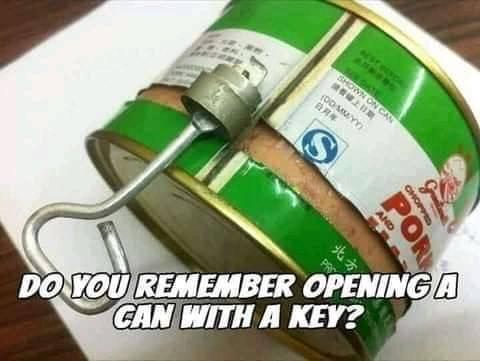
ADVERTISEMENT
Turning Back Time: The Era of Key-Opened Cans
Long before the convenience of pull-tabs and electric can openers, a small metal key attached to the side of a can was the gateway to everything from corned beef to condensed milk. The image of such a can, with its key and metal strip peeling away, evokes a wave of nostalgia for those who remember this once-common method of opening canned goods.
ADVERTISEMENT
The key-opened can was not just a utilitarian tool; it was a symbol of innovation and practicality in packaging technology. Introduced in the early 20th century, this method became widely popular for its ability to preserve food safely while also providing an easy means of access, all without the need for additional tools. The key would fit into a tab on the can’s top or side, and the user would then twist it, gradually peeling back the metal strip to reveal the contents inside.
This process, however, was not without its challenges. It required a certain technique to avoid breaking the key or the strip, and one had to be cautious to handle the sharp edges left by the metal strip. Yet, it was these very challenges that imparted a sense of satisfaction and accomplishment upon successfully opening a can, a small victory in the daily routine of home cooking.
Nostalgia for key-opened cans is about more than just the physical act of opening them—it’s about remembering the era they represent. This was a time when families gathered around radios, children played outside until the streetlights came on, and meals were a home-cooked affair. The key-operated can opener is a relic from this bygone era, a testament to the days when even a simple task like opening a can of food was part of the day’s hands-on, do-it-yourself ethos.
As modern packaging continues to evolve towards even greater convenience and safety, the key-opened can serves as a reminder of the ingenuity and quaint charm of the past. For those who lived through those times, the image is a poignant reminder of their youth and the simplicity that characterized it. For newer generations, it’s a curiosity, an artifact from a time when convenience looked markedly different than it does today.
This article aims to capture the historical and emotional significance of the key-opened can, offering a window into the past for those who remember it fondly and those who are curious about how previous generations lived and interacted with the products in their everyday lives.
ADVERTISEMENT



